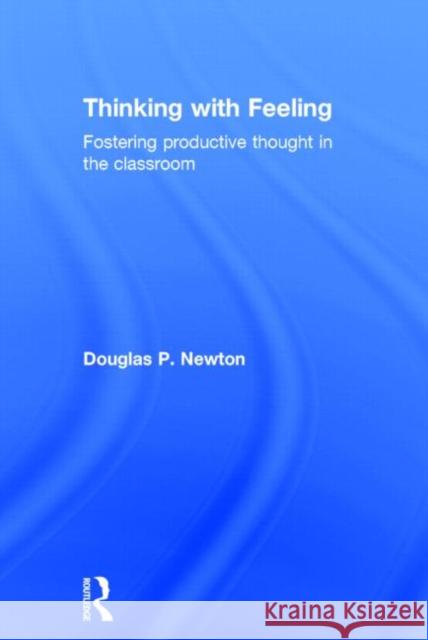Thinking with Feeling: Fostering Productive Thought in the Classroom » książka
Thinking with Feeling: Fostering Productive Thought in the Classroom
ISBN-13: 9780415819824 / Angielski / Twarda / 2014 / 204 str.
Thinking with Feeling: Fostering Productive Thought in the Classroom
ISBN-13: 9780415819824 / Angielski / Twarda / 2014 / 204 str.
(netto: 646,38 VAT: 5%)
Najniższa cena z 30 dni: 654,86
ok. 22 dni roboczych
Bez gwarancji dostawy przed świętami
Darmowa dostawa!
A superb analysis of the driving force behind motivation and learning...This book is a must for schools interested in taking the learning to a new level. "Dr Conrad Hughes, Director of Education, International School of Geneva, Switzerland"
Quite rightly shines a long overdue light on how emotions affect teaching and learning. "Sir Paul Grant, Headteacher, Robert Clack Academy, London, UK"
In today s world, there is often so much emphasis placed on the intellect that the interaction between feeling and thinking is rarely identified, yet alone addressed...Doug Newton has done a masterful job in connecting "sense and sensibility" in both theoretical and practical ways. "Dr Ken McCluskey, Dean and Professor of Education, University of Winnipeg, Canada"
Addresses a frequently ignored area in schools by challenging our understanding about the interaction of moods, emotions and cognition in the classroom It offers teachers invaluable practical advice on developing and sustaining productive thought in the classroom. "Professor Mike Younger, Cambridge University, Cambridge, UK"
Are emotions good or bad for thinking and learning?
Have you ever wondered why a good lesson of one year falls flat in another?
Why do students behave the way they do?
Teachers are expected to foster productive thought yet the neglect of emotion in the classroom, in favour of intellect, means teaching and learning is often not as effective as it might be. "Thinking with Feeling "explores what we mean by productive thought, its interrelationship with mood and emotions, how teachers can manage that interaction to improve teaching and learning, and what teacher trainers could do about it.
Synthesising the most important international research in the field, it" "offers a framework for productive, purposeful thought - deduction, understanding, creative thinking, wise thinking, and critical thinking - and explains how mood and emotion can support and also impede learning. It considers the effect of the interplay of emotion and intellect on classroom behaviour, on students public performance and performance in tests, and how emotional labour can affect the teacher.
Illustrated with examples from practice, this challenging, thoughtful study offers education professionals a basis for understanding the interaction of emotions and cognition and making it a successful partnership in order to improve teaching and learning.
"











